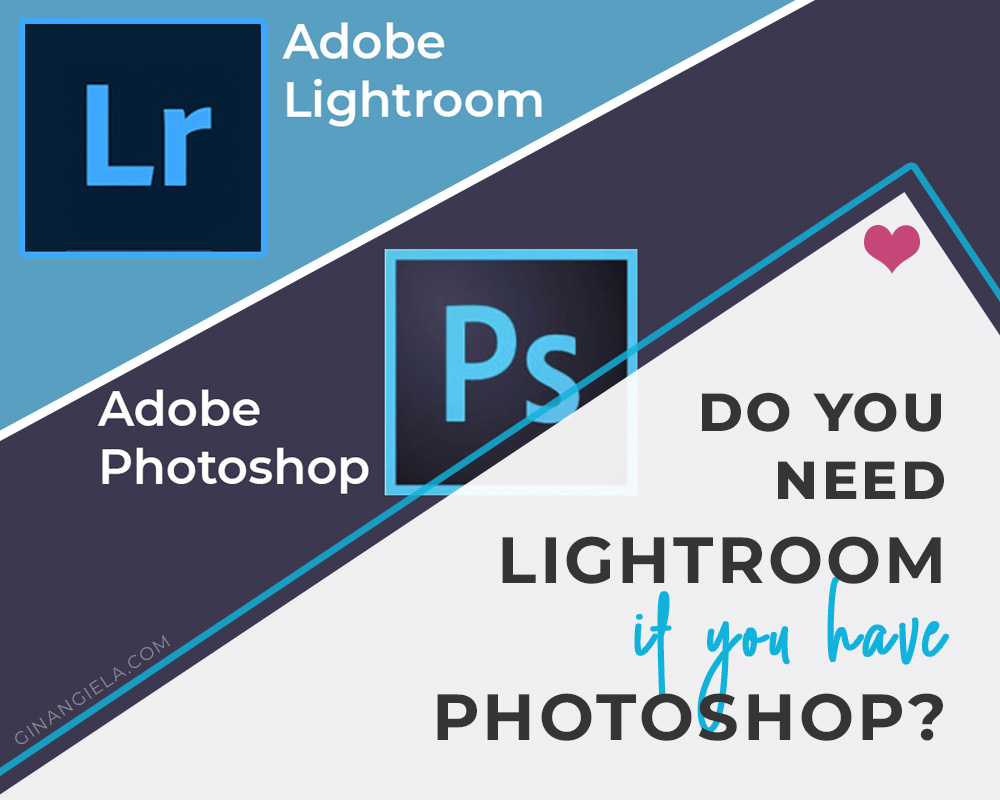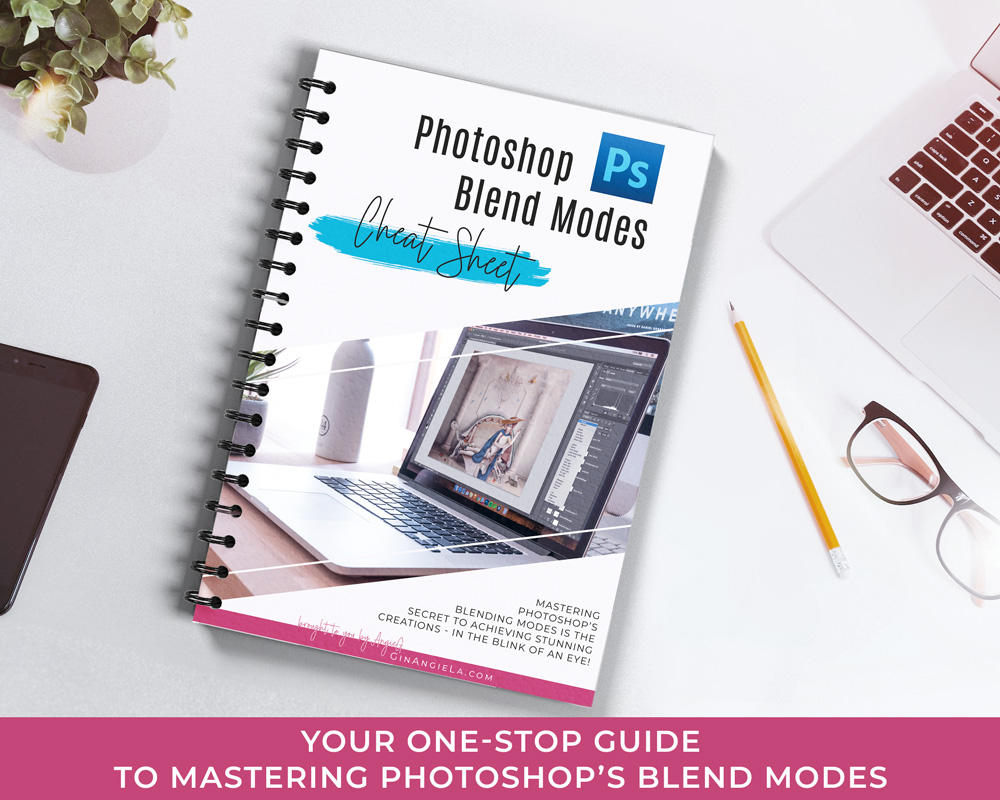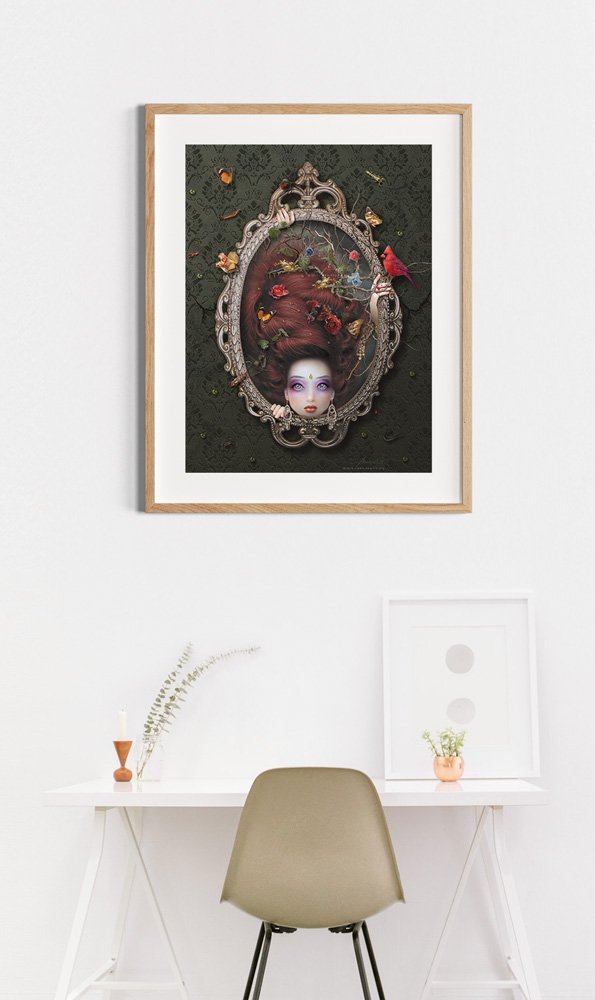Photoshop and Lightroom are both popular image editing apps from market leader Adobe. Despite the partly overlapping functions, there’s a clear difference between the two programs. This begs the question whether you need Lightroom if you have Photoshop, and which program is better. Read on to find out if you really need Lightroom or if Photoshop is enough!

Photoshop and Lightroom are two main image editing apps from market-leader Adobe. They are both designed for digital photographers and artists and offer lots of functionality. While there is some functional crossover, there is a clear difference between Photoshop and Lightroom.
Both programs offer non-destructive editing. Lightroom lets you alter photographs without permanently changing the original file. Photoshop works with layers (layer masks, adjustment layers, layer effects, etc.) that keep the original image intact.
If you are just starting out with digital art and photography, it can be difficult to get to grips with both programs at the same time. But do you need Lightroom if you have Photoshop?
To help you make your decision, we are going to look at both Photoshop and Lightroom in this article. Do you need both Lightroom and Photoshop? Or is one enough? And if so, which is better, Lightroom or Photoshop?
If you don’t have any experience with either program yet, you can get a free trial of each to test the waters.
What is the difference between Photoshop and Lightroom?
Both Photoshop and Lightroom are programs for digital editing with a lot of crossover. However, they were developed to meet different needs and achieve different goals.
Lightroom is perfect for managing, organizing and processing large quantities of photos. Photoshop gives you greater control over image editing and manipulation and allows you to make more expansive edits in general.
So sometimes it’s not a question of whether you need both Lightroom and Photoshop, but of which program to use first.
When it comes to basic image adjustments, you can do them both in Photoshop and in Lightroom. You can enhance light and color, sharpen, and add effects to your images. You can also whiten teeth, fix red eyes, heal skin and remove blemishes in both Lightroom and Photoshop.
The special advantage of Lightroom is its time-saving presets that allow you to apply the same settings to large batches of images. You can also create your own presets or download various pre-made presets.
The difference between Photoshop and Lightroom is only obvious when it comes to more complex edits. For instance, if you want to merge HDR, this is where Lightroom is better than Photoshop because of its higher dynamic range.
On the other hand, if you want to clone or cut out elements from an image or add new elements to it, this is where you need Photoshop.
Let me give you an example. If you like digital photography but you want to manipulate your captures in a way that you add things to give them a surreal touch, then you’ll need to work with Photoshop. My Lip Service Collection is mainly digital photography, however, with some photo manipulation that you can only achieve in Photoshop.
Does Photoshop include Lightroom?
Photoshop is available as part of a Creative Cloud subscription. Depending on which plan you choose, Lightroom may be included in the package.
The cheapest is the Photography Plan for US$19.99 per month, which includes Photoshop for desktop, web, and iOS, Lightroom, Lightroom Classic, and 1TB of cloud storage. So if you want to use both Photoshop and Lightroom, this is the way to go.
Another possibility is the All Apps Plan that will not only give you access to Photoshop and Lightroom, but also to all other Adobe apps.
There’s a particularly interesting offer for students and teachers. If you are a student and teacher, you can benefit from a generous 70% discount on all apps available in the Creative Cloud!
Adobe Photoshop CC Pricing Plans:
Adobe Photoshop Photography Plan (1TB)
FREE 7-Day Trial.
-
Photoshop on desktop and iPad, Lightroom on desktop and mobile, Lightroom Classic.
Adobe Photoshop Single App Plan (100 GB)
FREE 7-Day Trial.
-
Photoshop on desktop and iPad, 100GB of cloud storage, plus Photoshop Express on mobile.
Adobe Photoshop All Apps Plan (100 GB)
FREE 7-Day Trial.
-
Photoshop on desktop and iPad, plus the entire collection of apps available in the Creative Cloud.
Adobe Photoshop Student & Teacher Discount
70% Off & FREE 7-Day Trial.
-
Save over 70% on Photoshop, Lightroom and all Creative Cloud apps as student or teacher.
Do you really need Lightroom?
Lightroom is no photo manipulation software like Photoshop, because is doesn’t feature all the tools you need for heavy image editing.
Lightroom is mainly designed to support the workflow of professional photographers. One of Lightroom’s strongest points is image management. The app helps you to import, organize, process and export large quantities of photos.
Lightroom comes with a library-like catalog like Adobe Bridge. You can create albums and collections, and rate your photos to pinpoint the best shots. You can also use keywords and the search function to find the particular shot you are looking for.
Lightroom caters to most of the basic editing needs. You can crop your images, adjust white balance, exposure, color, vibrance, and saturation. You can also add gradients, reduce noise, sharpen images, and convert them to black and white.
Simple manipulations like removing spots and correcting red eyes are possible, too.
If you like to shoot Camera Raw, then Lightroom will be a great choice to edit your RAW files.
All edits made in Lightroom are non-destructive, meaning they never overwrite the original image.
Lightroom is much easier to learn than Photoshop, which is something to keep in mind for beginners.
Lightroom and Photoshop work hand in hand, that’s why many photographers and digital artists start working with Lightroom and then switch over to Photoshop for more extensive edits.
Adobe Lightroom CC Pricing Plans:
Adobe
Lightroom Plan (1TB)
FREE 7-Day Trial.
-
Lightroom on desktop, mobile, and web, Lightroom Classic, and 1TB of cloud storage.
Adobe Lightroom Photography Plan (1TB)
FREE 7-Day Trial.
-
Lightroom & Photoshop on desktop and iPad, Lightroom Classic and 1TB of storage.
Adobe Lightroom All Apps Plan (100 GB)
FREE 7-Day Trial.
-
Lightroom & Photoshop on web, desktop, and mobile, plus all Creative Cloud apps.
Adobe Lightroom Student & Teacher Discount
70% Off & FREE 7-Day Trial.
-
Save over 70% on Lightroom, Photoshop and all other apps available in the Creative Cloud.
Lightroom vs Lightroom Classic
It’s important to note that there are two versions of Adobe Lightroom: Lightroom and Lightroom Classic.
Lightroom Classic is the desktop app that stores your photos on your local hard drive. But you can still synch your photos with the cloud, if needed.
Lightroom Classic features more editing tools and more organizational power than Lightroom. That’s why professional photographers prefer to use Lightroom Classic.
The ‘simple’ Lightroom version stores your photos in the cloud and makes it easier to operate across devices, from desktop to iPad to iPhone or Android smartphone. All your edits are automatically synched in real time without you having to lift a finger.
Related: Adobe’s Mobile App: 10 Reasons Why Photoshop Express Is Worth It

Do professional photographers use Lightroom or Photoshop?
We all have our personal preferences, but when it comes to Adobe apps, many professional photographers use both Lightroom and Photoshop. Each to a certain extent and in a certain order.
As a rule of thumb, you will start processing your images in Lightroom and then continue working on individual images in Photoshop.
Lightroom and Photoshop have similar functionality, but certain edits can only be done in Photoshop.
Let’s look at some examples:
- Photo Retouching: You can retouch your photos in Lightroom on a basic level, e.g. correcting red eyes and blemishes. However, to make a nose thinner, enlarge the eyes, or liquify the jaw line, you need Photoshop.
- Advanced Healing: While you can remove blemishes, stray hairs, and other small objects in Lightroom, the tools aren’t as powerful as Photoshop’s content-aware healing brush, patch tool, and clone stamp tool.
- Panorama Pictures: Both Lightroom and Photoshop allow you to fit several images together, but the results are different. Photoshop is the more flexible option to create beautiful panorama pictures.
- HDR Blending: Although Lightroom is capable of blending images together (there are special HDR plugins available for Lightroom), more complex mixing is only possible in Photoshop. Photoshop has 27 blending modes at this point in time that allow you to create any effect you can think of.
- Grab your FREE Photoshop Blend Modes Cheat Sheet
- Image Composites: This is what only Photoshop is capable of. If you want to combine images, cut out things, add elements to make a totally new and unique creation, then Lightroom will fail you. Only Photoshop has the array of layers, layer masks, adjustments and other effects that you need for complex photo manipulations.
If you’d like to make the type of image composites that I create in my Surreal Stories, then you can only use Photoshop.
In conclusion, do you need Lightroom if you have Photoshop?
As we have learned above, Photoshop is a digital manipulation program that is capable of more complex editing and finer adjustments that can’t be done in Lightroom.
Lightroom is great for organizing your images and making batch edits that you cannot do with Photoshop.
So do you need both Lightroom and Photoshop?
Well, there is no clear-cut answer to that question. Digital artists and photographers often try to compare the two programs, wondering which is better, Lightroom or Photoshop.
Truth is both programs work hand in hand. If you work with both apps, you might find yourself going back and forth from one to the other, depending on the task at hand.
Photoshop is capable of most edits that you can do in Lightroom, and many more. But you can only work on one image at a time, while Lightroom allows you to apply edits to multiple images at once.
So if you can only get one program, my personal advice would be to stick to Photoshop, simply for its wide array of functionality.
However, if you have the option to get both, I highly recommend getting Lightroom and Photoshop together with Adobe’s affordable Photography Plan.
Nevertheless, it all depends on your personal artistic needs, and before determining whether Lightroom or Photoshop is better for you, you can try each one free for 7 days and then make your decision!
Warning: Trying to access array offset on value of type null in /home/u693537529/domains/ginangiela.com/public_html/wp-content/plugins/essential-addons-elementor/includes/Elements/Post_Block.php on line 794





My name is Angie and I’m a self-taught digital artist. On this blog, I am sharing my knowledge and discussing the best software and hardware for different artistic needs. My desire is to offer options for all creative stages and budgets so that everyone can follow their dream and create art!







